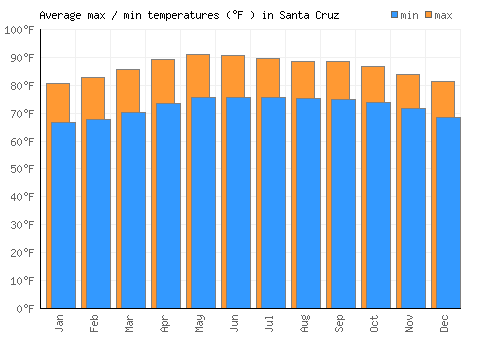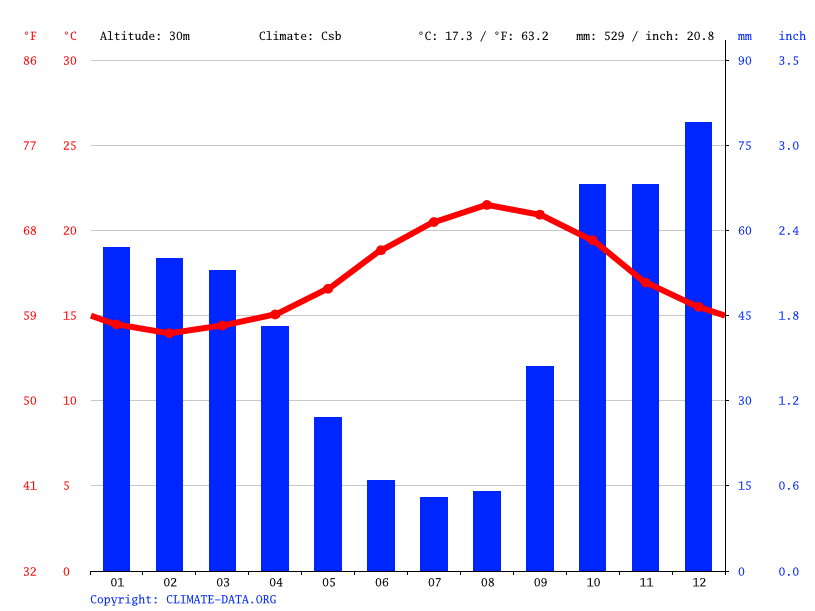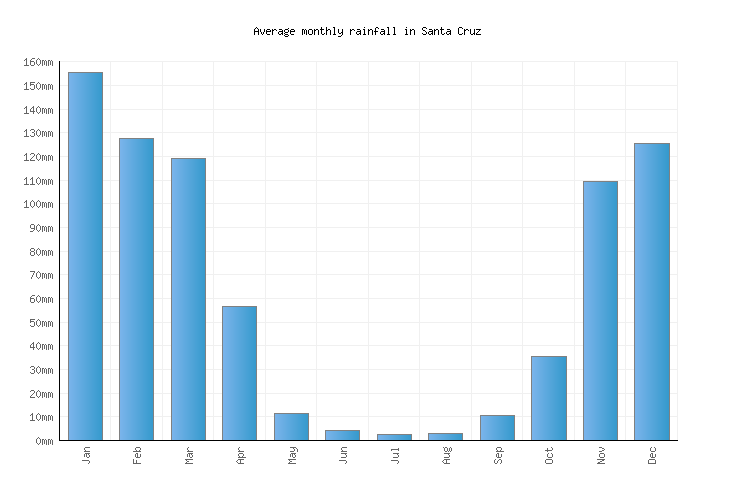
Lifeguards can give you advice on waves if you’re planning to go into the water. If the arrow is parallel to or pointing away from land, the wave height is likely to be lower on the beach than it is offshore. brings you the most accurate monthly weather forecast for Santa Cruz, CA, United States with average/record and high/low temperatures, precipitation and more. If the arrow points towards land, most of the waves’ power will reach the beach. It indicates how sheltered the beach will be from these waves. The arrow shows the average direction of the waves 1-2 miles out to sea.

A long wave period (more than 10 seconds) means the waves at the beach may be more powerful. This is the average number of seconds between one wave and the next, 1-2 miles out to sea. Read more about calculating the expected height of the waves at the beach. If you are close to the water, keep an eye on the waves to stop you or your belongings being swept away. The individual waves out to sea or at the beach can be higher than this number. This is the average height of the waves, 1-2 miles out to sea. 11 Extreme - Avoid being outside during midday hours. 8-10 Very high - Spend time in the shade between 11am and 3pm. 6-7 High - Seek shade during midday hours, cover up and wear sunscreen. 3-5 Moderate - Take care during midday hours and do not spend too much time in the sun unprotected. No risk of UV - It’s safe to stay outside. UV exposure index and the protection required to help keep you safe: The higher the percentage of humidity, the wetter it will feel outside. If there is a lot of water vapour, the humidity will be high. brings you the most accurate monthly weather forecast for Santa Cruz, CA with average/record and high/low temperatures, precipitation and more. Humidity is the amount of water vapor in the air. Visibility measures the distance at which an object can be clearly seen. The first month of the autumn, September, is still a pleasant month in Santa Cruz, California, with an average temperature fluctuating between 73☏ (22.8☌) and 55.2☏ (12.9☌). Read more about how wind will affect you at the beach. The number is the average wind speed.īeware of offshore winds if you are using inflatables, paddle boards or kayaks. If the arrow points from land to sea, the wind will be blowing out to sea (‘offshore’). The arrow shows the direction of the wind (up is north). The number represents the average wind speed expected at that time. NOAA National Weather Service National Weather Service. The letters show the direction the wind is blowing from (on a standard 16-point compass). The arrow shows the direction the wind is blowing.

Strong winds are shown in bold for speeds of 29 mph or more. Wind gust shows the highest wind speed that you should encounter at that time, as winds peak and lull. This gives you a better idea of how the temperature will actually feel at the time. You can see the temperature in Celsius or Fahrenheit by using the dropdown menu.įeels like temperature considers other factors, such as wind speed and humidity. This number shows the air temperature for the time period. In addition to providing the data that have been collected to date, the agreement also calls for WHOI to transfer an additional 710 gigabytes of data annually for the next ten years.Chance of precipitation represents how likely it is that rain (or other types of precipitation, such as sleet, snow, hail and drizzle) will fall from the sky at a certain time. NCEI will ensure that the metadata associated with the data are up to federal and international standards such as those regarding storage, preservation, and accessibility.

Roles and Responsibilities NCEI will be responsible for acquiring and managing the required IT storage for the data that WHOI will provide, which is expected to amount to roughly seven terabytes. “Under this partnership agreement, NOAA expects to be provided at least 30 years of high-quality oceanographic data produced by the Ocean Observatories Initiative, commissioned in 2017, for preservation and stewardship” said Jason Cooper, NCEI’s Archivist.
#WEATHER SANTA CRUZ MONTHLY ARCHIVE#
The goal of the partnership is to archive and deliver the initiative’s data for continued research on ocean processes.

NOAA’s National Centers for Environmental Information (NCEI) and the Woods Hole Oceanographic Institution (WHOI) established a Cooperative Research and Development Agreement (CRADA) to share high-quality oceanic data collected from the National Science Foundation (NSF)-funded Ocean Observatories Initiative’s instrument arrays. NCEI and WHOI Begin Research Collaboration


 0 kommentar(er)
0 kommentar(er)
